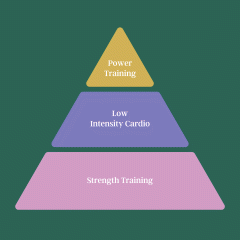The right tips for meditation are crucial for the success of your meditation practice. More and more people start to meditate every day, searching for peace, solace, and personal improvement.
Many beginners of meditation are wrongly guided and, as a result, there are thousands of courses available for meditation, teaching meditation in various ways—some in a week, other in 10-days course. There are weekend seminars on meditation, most of them making the initiation of your meditation practice even more confusing.
You don’t need to read books or any courses on meditation that go for days or weeks. Use these three tips for meditation, and you’ll experience a quick and proper initiation in the practice of meditation.
Regardless of your knowledge about meditation, if you apply these tips as shown, you’ll experience a meditative state of mind and understand what meditation really is and how to meditate properly.
As a Raja Yoga Teacher, I study and practice meditation for 19 years and my in-depth research into the philosophy and psychology of yoga has given me the knowledge embedded in these tips I’ll show you here.
Meditation Is an Intrinsic Activity
The concept of meditation has developed in the ancient wisdom of the Brihadaranyaka and Chandogya Upanishad, dating back to the earlier part of the 1st Millennium BCE.
Chandogya Upanishad opens up with the sutra:
“Let a man meditate on OM.”
Later on, the concept of meditation evolved in traditions as Jainism and Buddhism having various kinds of definitions and techniques. However, all of the definitions aim towards the same purpose and that is to attend and inquire into the human mind.
To give you an easy reference when sharing information about meditation, I’ll refer to the definition of meditation from the original texts of Yoga—the Yoga Sutras of Patanjali:
“Tatra Pratyayaikatanaataa Dhyaanam”
This means that meditation is the constant focus on an object, subject, image, or thought.
One of the most important things to mention before giving you tips for a successful meditation process is that meditation is not something you can learn outside of yourself—it is a process of internal communication between your ego and your intelligence, happening inside of you.
1. Knowing
For the very beginner of meditation, the first and most important tip on meditation is to know that you attend your mind.
This tip goes before the tips on how to sit right or meditate at the same time (early or late) at the same corner of your home. Know that meditation can be done at any time (morning, noon, evening), at any place (bathroom, bedroom, kitchen, park, etc.), and in any position (lying, sitting, or standing).
The mental activity of meditation, which has a psychological and spiritual purpose, can’t be conditioned by time, place. or form. This means that before you get busy with the physiological aspects of your meditation practice, you know that you attend:
your knowledge, your memories, your imaginations, your misconceptions, and your sleep.These five mental fluctuations create your thoughts, feelings, and emotions. As a result, you end up in a certain mood—a state of being, that either advances or detriments your progress of meditation.
One of the most common mistakes that beginners do in mediation is getting engaged in the aspects of their body and mind. They have their concentration on those distractions practically throughout the whole meditation exercise where they generate:
constant feelings of discomfort; thoughts of inability to perform the practice; and emotions they don’t understand and try to get rid of.To omit this mistake, pay close attention to this first tip and make it the fundament of your meditation exercise. Make sure you know that you attend your mind so you’ll start meditating.
2. Adjusting
Being a beginner, you can only last a few minutes in the proper meditation process, so it’s inefficient and ineffective to get occupied with your body position, location, place, and time before the realization of the first tip for mediation—the knowledge that you are attending your mind and knowing that this work is intrinsic and instantaneous.
If needed, adjusting can take care of your:
Asana (body posture which can enable you to sit firmly and comfortably for an extended period of time); Pranayama (control of breathing); Pratyahara (withdrawal of the senses); and Dharana (concentration).By the above four, I explicitly mean:
Asana: Your body feels firm and comfortable—able to remain in that preferred position for the assigned period of time (5, 10, 15, or even 30 minutes). Don’t think this is a big deal here; this step can take only a few seconds until you have adjusted your body position. For preparing your body to sit firmly and comfortably you can use certain yoga postures (especially the squat pose). Pranayama: Your breathing is flowing smoothly and you follow the streaming of your inhalation and exhalation. Also, this takes only a second. Use breathing exercises to help you feel what pranayama means. Pratyahara: Your senses are withdrawn during the exercise. This doesn’t mean you attempt not to feel your body (hands, legs, skin), like ignoring your sense of touch or some sounds coming from the outside. These attempts are simply distractions for your practice. What you do is just let all the coming signals from the external stimuli flow and pass through your mind without identifying them. This way, the signals will gradually vanish and you won’t notice them anymore. That is a withdrawal of the senses. Dharana: Your mind gets fixed on a certain object. This involves activation of the sense of sight (this makes Pratyahara impossible). Hence, I recommend fixing your mind on your breathing. This ensures the execution of the last three criteria at once (Pranayama, Pratyahara, and Dharana).Sometimes in your meditation exercises, you’ll need to adjust these four elements more and sometimes less. Once you’re advanced in the practice of meditation, you’ll execute the first and the second tip so perfectly to the point where they are simply a part of you.
3. Observing
After the knowledge you’ve gained from the first tip and the adjustments that you’ve made from the second tip, now you have only one thing left to do: observe. By this, I mean internal observation as introspection.
Dwell in a state of observation of your mental state of being, whatever it is. Meditation is the right thing for you to analyze and focus on yourself, especially when you’re surrounded by negativity.
It is more likely that your mental state of being shifts in the early stage of your practice. Here is the most important confusion between concentration and meditation that practitioners struggle with:
When your state of being shifts, the meditation ends and changes from one subject matter to another, and a new meditation process begins—here the mind concentrates on the new subject matter. If the need for concentration shifts too often and too quickly the practitioner is caught up in practicing concentration and not meditation.
But observing and being aware of that shift, through diligent practicing, the mind will gradually become more and more stable up to the point where you’ll be able to dwell in a mental state of a continuous flow on one subject matter only.
Marcus Aurelius stated in his book, Meditations, that a diligent practice will make your life happy:
If you do the job in a principled way, with diligence, energy and patience, if you keep yourself free of distractions, and keep the spirit inside you undamaged, as if you might have to give it back at any moment—If you can embrace this without fear or expectation—can find fulfillment in what you’re doing now, as Nature intended, and in superhuman truthfulness (every word, every utterance)—then your life will be happy. No one can prevent that.
Conclusion
Only the effort of observing can make sure you recognize if you’re concentrating or meditating. Once you have mastered that moment, your concentration becomes effortless. Just imagine the beauty of being able to master concentration. This goal stands on everybody’s wish-list.
By mastering meditation, you’d not only master yourself, but you’ll also master life and death. Knowing is the result of rational observing and adjusting makes the process between observing and knowing compact and efficient.
Use these three tips and you’ll see the beauty in meditation and the beauty within you!
More Tips for Meditation
Featured photo credit: https://unsplash.com/photos/S6UT8dEsLMU via unsplash.com





























































